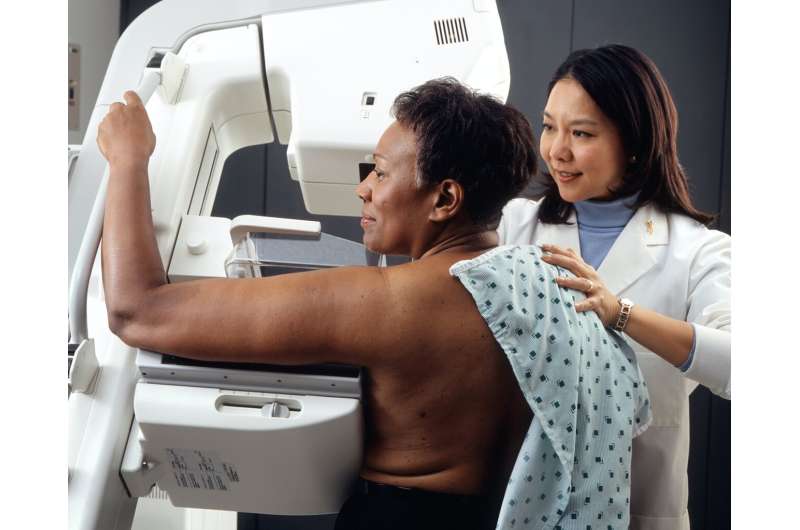This article has been reviewed according to Science X's editorial process and policies. Editors have highlighted the following attributes while ensuring the content's credibility:
fact-checked
peer-reviewed publication
trusted source
proofread
Mammograms found to increase when patients self-schedule

Having the ability to self-schedule mammograms was associated with a 15 percentage point increase following through with getting the screening, according to research from the Perelman School of Medicine at the University of Pennsylvania. The paper was published today in the American Journal of Preventive Medicine.
"Self-scheduling helps make the path to mammogram completion a little smoother, where you don't have to find the time to call a scheduling line, wait on hold, or go back and forth trying to find an appointment that works for your schedule," said the study's lead author, Kimberly Waddell, Ph.D., MSCI, an assistant professor of Physical Medicine and Rehabilitation. "Simple changes like these can have an outsized impact on preventive health screenings."
As one in every eight women are affected by breast cancer, mammograms are recommended to regularly be completed for women. However, though mammograms are tied to early detection of cancer and a better prognosis for treatment, many remain overdue for their screenings.
For their study, Waddell and senior author Shivan Mehta, MD, MBA, an associate professor of Gastroenterology and the associate chief innovation officer of Penn Medicine, along with their colleagues, analyzed data from 2016-2019 when the University of Pennsylvania Health System opened up the opportunity for patients to schedule their own mammograms through their personal online patient portals and compared it to data from 2014 until 2016, before this was possible.
To schedule their mammograms, all patients needed was an order—initiated after seeing their primary care provider—and to log in to the patient portal and click through to a scheduling link. They also received a reminder e-mail message to self-schedule through their portal.
Before this, patients referred for mammograms received no reminders and had to make calls during regular business hours to schedule. By using the behavioral science concept of "nudging," which entails making small changes that make it easier and more likely for people to accomplish the desired task, the health system was able to encourage completion of what could have previously served as a barrier to screening.
"Self-scheduling functionality provides the right kind of prompt since it allows patients to immediately schedule their screening in just a few steps," said Mehta. "Removing barriers is key in behavioral science, and we were able to demonstrate the value of it firsthand here."
Data from roughly 35,000 patient visits showed that, overall, mammogram completions roughly doubled over the study period, going from approximately 22 percent to 50. Within that, the self-scheduling was directly associated with an approximate 13 percentage point increase in screening completions, according to the researchers. At scale, when applied to the 35,000 patients in the study, that translates to roughly 4,500 more people getting screened.
Among those who were specifically active in their online patient portals—meaning they'd logged into the portal at least once in the previous year—the self-scheduling intervention was associated with a 13 percentage point increase in screenings compared to those who didn't use their patient portal previously.
Strikingly, the intervention that was studied was so simple and, importantly, inexpensive.
"Low-cost interventions are particularly appealing because they require fewer resources. This function was scaled across the health system in a matter of months, did not require significant clinical or staff resources, is durable over time, and was associated with the gains we saw," Waddell said. "That all checks several boxes in terms of improving patient care without requiring much in terms of additional staff time or financial commitment."
Ease of use for any new patient-facing system is also critical.
"Patients want options on ways to schedule their appointment, and the self-scheduling feature provides another, easy 24/7 pathway to schedule when it's convenient to them," said study co-author Jake Moore, MBA, director of Access Optimization at Penn Medicine.
Moving forward, the researchers are conducting a clinical trial with nudges directed both at patients and their clinicians to improve mammogram completion. They plan to deliver an additional, targeted text message nudge to patients in demographics who are at higher risk for not completing a mammogram.
More information: Kimberly J. Waddell et al, Association of Electronic Self-Scheduling and Screening Mammogram Completion, American Journal of Preventive Medicine (2023). DOI: 10.1016/j.amepre.2023.11.002




















